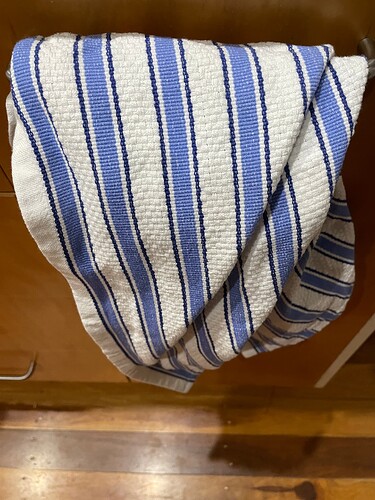T shirts today also come with lycra or some other elastic element. I feel like on a given day, they wake in the drawer and say ‘nope, letting go of the stretchy stuff today.’ Then instead of a t shirt I have a nighty. or a dress, or a garment that is 4 sizes bigger!
The ones I got looked a little different, not sure if they are the same. I replied to your question on email as well, but am not sure it went through.
The answer: it didn’t! I think manufacturers are just risk-averse. They don’t want the remotest possibility that someone can claim to have followed the instructions but [the colour ran, or the fabric fell apart, or it shrank / stretched, etc].
It’s a bit like those ‘warning’ labels that the flat metal part of an iron “may be hot”.
I was bemused by the instruction label on the (very grubby) removable fabric covers of a pine lounge suite we bought second hand many years ago: “Do not machine wash. Do not hand wash. Do not dry clean.”, it proclaimed. Dispose of thoughtfully once it gets too filthy?
The fabric was a loose basket weave and the yarn some kind of robust cotton-synthetic mix. I felt it should stand up to careful hand-washing. And it did - not just intact, but several shades lighter in colour (from shedding dirt, not losing dye). 20+ years and many washes later, it was still in good condition when we gave the suite away.
So: take laundry labels with a pinch of salt. ![]()
Yet sometimes they understate. Recently encountered some pillowcases that shrunk more than 10% because of being tumble dried when the care tag indicated they could be tumble dried. They no longer fit a pillow. One would have hoped it would have been 10% oversized to account for ‘excessive shrinkage’ but no. Refund received.
I used to think that but these days I feel as if the problem might be the wearer. ![]()
I find that drying in the shade increases the useful life of clothing items that contain elastic (in one form or other).
I’m not a fan of fabric with woven in lycra, elastane, etc. as it seems like just another form of built-in obsolescence.
That leads to your underpants falling down.
Ah yes, Americans and tumble dryers, last year I bought a VERY expensive doona cover, American made, cotton so I presumed fairly robust. I always line dry where possible and I much prefer to line dry bedding, first time I washed the cover it started to get fade lines where it was hung out, I am always very careful and don’t leave things on the line any longer than necessary but every time it’s washed it gets worse and despite being less than a year old looks quite tatty. I have other doona covers, cheaper and older still look great so I’ll definitely be nominating this brand for a shonky award.
It always fascinates me how products made for different regions respond to care.
FWIW most American products are made to be tumble dried. Some estates do not allow outside clotheslines!
We still have some American Vera Wang ‘Simply Vera’ sheet and pillowcase sets, 20 years old, tumble and line dried over time, that are in as good shape as 6 month old Sheridans - save for the Simply Veras being a bit thread worn at the edges. The Simply Vera king size pillowcases did not shrink whereas the Sheridans shrunk so much (with reference to the care labels!) they arguably fit the pillows and were refunded.
My shonky doona cover is Lacoste. I have Sheridan sheets and pillowcases on spare beds and they haven’t shrunk but they do fade. By far the best sheets and pillowcases I have bought are Sheet Society…I also have some very old sheets from Blessed Earth in Maleny and they are also as good as new. My replacement of the Lacoste doona cover will be from Sheet Society. I just cannot comprehend that line drying is forbidden in some places in the USA but I have read about this previously.
Thanks for that. When I looked further, I couldn’t find the one I posted on the rest of the website, so yours is probably what there is now.
